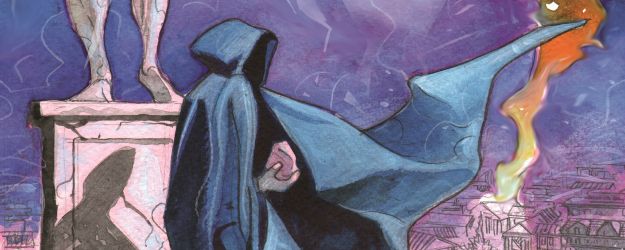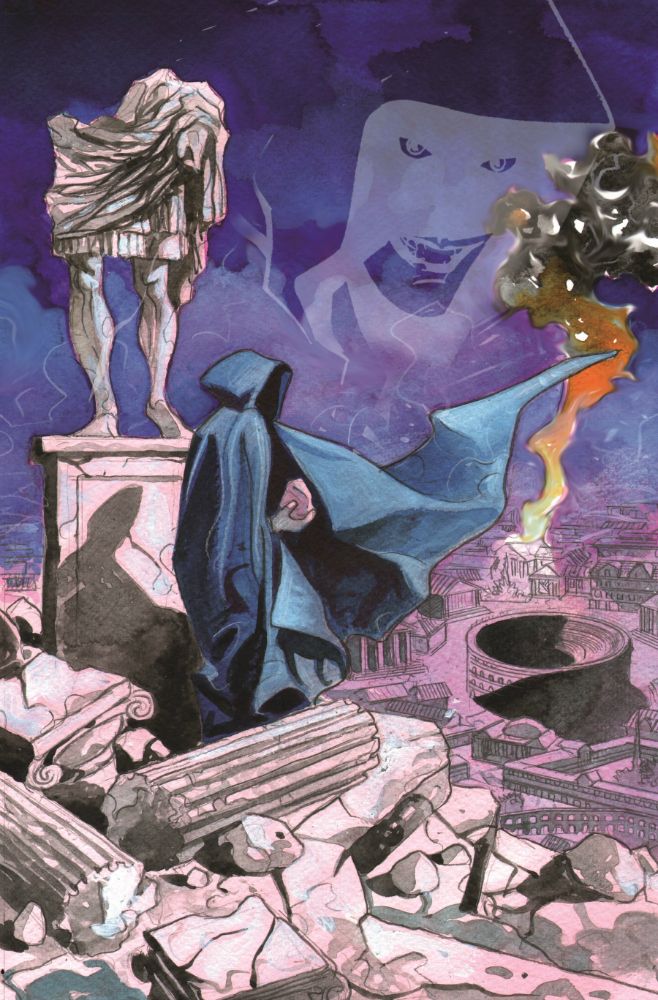Seemingly every week a new Kickstarter project worthy of support attracts my attention. Last week, writer Travis Horseman made me aware of his campaign for Amiculus: A Secret History. Horseman, who characterizes himself as a incurable graphic novel junkie, clearly relished the opportunity to discuss his original, epic three-part graphic novel series telling a lost history of the fall of Rome.
At the beginning of the interview, I was curious to learn what Horseman meant by quasi-historical, and the discussion took off from there.
Tim O'Shea: What prompted you to pursue a quasi-historical story, as opposed to other genres?
Travis Horseman: I have loved classical history, particularly Greek and Roman, since I was in first grade. I like Roman history ever so slightly more than Greek, because I think it is the ancient culture that most parallels our own. I also love being able to find the gaps in said history and fill them in with "what-if" scenarios like Amiculus. And toward the end of the Roman Empire, there were a lot of gaps.
Given that the project started as a play to a certain extent, why shift to graphic novel as the form of entertainment?
I've actually tried writing Amiculus a couple of different ways before turning it into a comic, as a short story or a novella as well as a play. It seemed to work best as a comic, though, the way the images and pacing of the story presented themselves to me. I think it would make an amazing film as well.
Amiculus was actually intended as a test run for another comic project. I only intended it to be 24 to 32 pages. But it didn't feel complete at that length, so I kept adding and growing the story. After 15 drafts or so, I have a script verging on 180 pages.
What can you portray effectively in comics that is harder to pull off in a theatrical play?
Writing a comic script is (to me) a lot like writing a film script: The panel is like the lens of the camera. It can focus on particular elements while downplaying others, and transport you instantly from place to place or time to time between one panel and the next. It's one of the reasons so many comics are made into films: a comic is an instant storyboard. This sort of storytelling is possible, but much more difficult, to do in a stage play, which diffuses focus and limits the sort of transitions I mentioned. I love theater, but I felt this story could be told better in a different format.
How did you team up with artist Giancarlo Caracuzzo on the project? What is it about his art style that makes him a perfect match for you?
I met him on LinkedIn, believe it or not. A comic creator friend pointed him out to me. It wasn't just that he was Italian, that he was from Rome: His style conveys an authenticity, an old-world realness, a richness of character and of place, that I doubt another artist could improve upon. His dedication and passion for the project is clear in everything he's done so far; after all, he is helping to tell a story of his ancient ancestors. Also, do you know we've been working together for almost two years and have never met in person? Yet we work fantastically together creatively. That's how amazing he is! We're planning on meeting for the first time this August.
You promise a story that features an " intricate mosaic of conspiracy within conspiracy." How do you pull that off without making the story too confusing and inaccessible for the reader?
Since the Western Roman Empire is on its last legs, it's kind of every man for himself. All the major Roman players are looking toward their own gains while keeping up the appearance of a united front against the barbarians. But what none of them knows is that, in spite of each of their own ambitions, their intrigues all serve the larger goals of Amiculus. At its heart, Amiculus is a threefold mystery: Who is he, how does he bring Rome down, and why? In the end, all of the plots come together to answer these three questions.
What kind of Kickstarter rewards are you offering?
In addition to the basic 60-page book and PDF, I am also offering a wide variety of limited edition art, including cover art posters, page art posters, character layout drawings as prints and postcards, the opportunity to be "Amiculized," or drawn in the style of the book by Mr. Caracuzzo, and the opportunity to be drawn into the book as a character, along with a unique character drawing by Mr. Caracuzzo. I'm also offering an oversized 80-page version of Volume 1 and the signed script as well.
When you exceed your prime goal, what kind of stretch goals are you hoping to tackle?
I am also considering a hardcover version of the book, an oversize map of Rome drawn by Mr. Caracuzzo for the book and a backers-only Amiculus T-shirt.
When tackling a quasi-historical story, do you still need to do research to make sure it is still rooted in a sliver of actual history?
I care very much about historical accuracy (and for the more creative parts, plausibility). I've done a lot of research. One of my characters, Procopius, was an actual historian living during the time of Amiculus. A lot of my research was drawn from his history The Gothic Wars, and another work of his, The Secret History, influenced my title. Other sources include Edward Gibbon, Priscus, Jordanes and the Anonymus Valesianus. There was also a great conspiratorial history book called The Night Attila Died by Michael Babcock that was a great inspiration for some of the events and character motivations in the book.
What should we discuss that I neglected to ask about?
Well, this may be a bit premature, but I'm currently drafting a sequel to this series (or more accurately, a mid-quel, I guess). Amiculus: A Secret History bounces back and forth between the fall of Rome and the Byzantine (Eastern Roman) reconquest of the west, which were 60 years apart. The mid-quel covers some of what happened in between those two dates. I know what people say about -quels of any kind, but I'm pretty excited about this. The working title right now is Amiculus: King of Italy.


